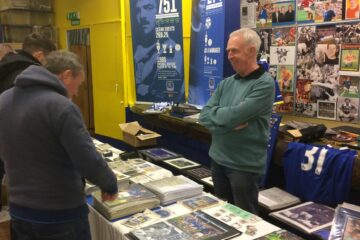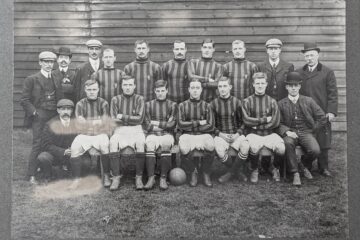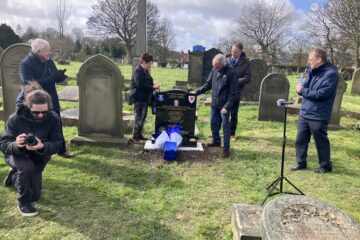There is something truly magical about a football stadium under lights. The glow guides you from miles away. From within, there’s an enhanced – almost animated – quality to your view of proceedings. The artificial light glistens on the fabric of the players’ shirts and picks out the moisture on the freshly watered, bright green pitch. And, of course, the electricity seems to energise the crowd – adding a few extra decibels to the crowd’s roar.
It’s hard to imagine that, as recently as the 1950s, winter kick-off times had to be set so that matches would conclude before dusk, whilst midweek fixtures were a rarity. However, as far back as the Victorian era, innovators were seeking a solution to the issue of playing after sunset. In 1890, Everton’s Anfield stadium played host to trial matches using gas-fuelled Wells Lights. Although an interesting novelty which drew the crowds to the exhibition matches, the illumination produced was insufficient for competitive sporting contests.
As Britain emerged from the Second World War with record crowds coming to watch the national sport, developments in electrical technology finally made floodlights a viable option. The conservative football authorities were wary, however. The Football League argued vociferously that floodlit evening fixtures would hit weekend attendances. It fell to clubs outside the League to spearhead the adoption of the nascent technology.
South Liverpool FC pioneered the use of ‘permanent’ floodlights at Holly Park in a friendly against a Nigerian team in September 1949. The FA and Football League gradually softened their stance -allowing matches to take place if both teams competing in a match agreed to play under the lights. In 1956, Fratton Park hosted the first floodlit Football League fixture – giving impetus for other clubs to follow Portsmouth’s lead. Another factor in the adoption of floodlighting was the dawning on club officials of the potential for lucrative midweek European fixtures.
Everton directors had visited Vicarage Road in January 1954 as part of the initial research process into floodlighting for Goodison Park. A dedicated sub-committee was formed under director Fred Micklesfield to weigh up the options. In 1956, supported financially by John Moores, the club ordered four floodlight pylons. They were fabricated and erected by Harry Peers and Co of Bolton. Delayed by a shortage of steel girders, they were eventually ready for use in the autumn of 1957. The bill came to £38,000 (just shy of a million pounds at 2020 prices).
The coverage in the local press gave a raft of statistics. Each of the four 160 foot high towers (just eclipsing those at Hillsborough – the tallest at that time) held 36 GEC 1,500-watt tungsten lamps. The lamps were aligned in such a manner that the light coverage was uniform over every blade of grass. No one spot had less than the power of four lamps on it. The foundations for each tower consisted of 240 tons of concrete, going no less than 11 feet deep into the ground. The design allowed for a ‘flex’ of up to three inches at the top of each tower in the event of gale-force winds.
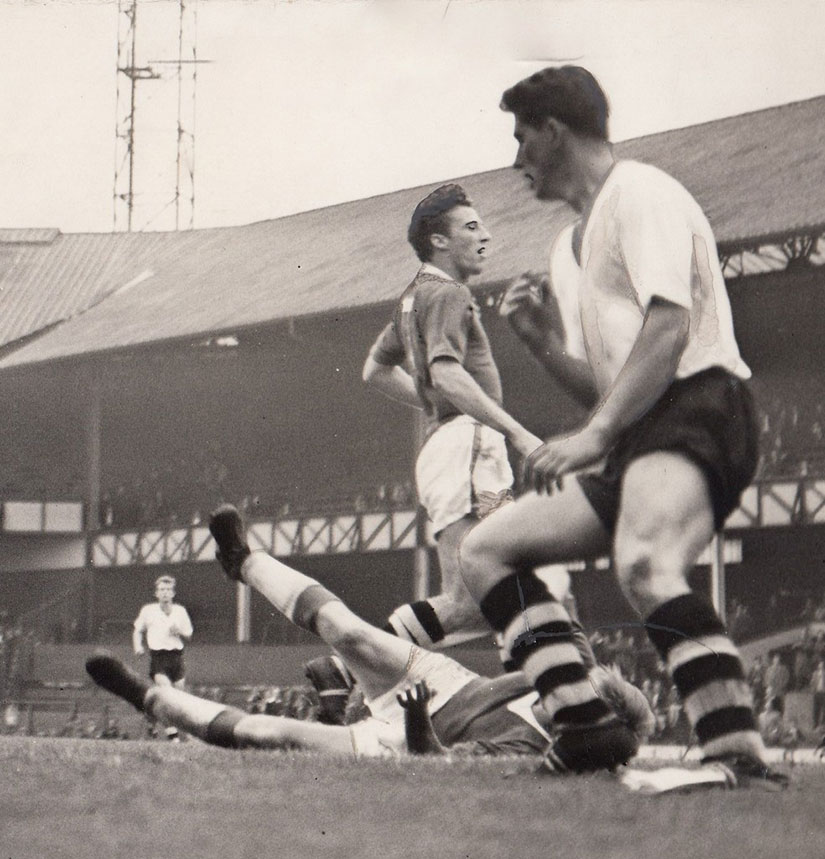
Goodison Park in 1957 with pylon on the corner of Bullens Road and Gwladys Street visible
The electricity consumed during a 90-minute match was said too equal that used by a typical home in six months. A transformer substation was built on site, able to provide the 6,000-volt load. Lighting within the ground (on terraces, in entrances and exits etc) was also upgraded to permit safe pedestrian circulation in the hours of darkness. An operational protocol was drawn-up for a phased switch-on before a match (a third of lights switched on initially; two-thirds lit for the pre-match warm-up, and all lights blazing just in time for kick-off). A back-up diesel generator was installed to supply emergency power to essential lighting within the ground. The Merseyside & North Wales Electricity Board (MANWEB) gave assurances that the floodlights’ supply could be switched to an alternative source within 5 minutes should a failure occur.
In early October 1957, Ian Buchan’s squad took part in a practice match at Goodison Park to test the players’ reaction to the artificial lighting – the feedback was positive with only one player claiming to have lost the flight of the ball in the bright lights. Everton had considered a fixture against continental opposition, but with Anfield also having lighting erected, it was agreed that a Floodlit Cup match between the Merseyside rivals would be staged at each stadium to mark the commissioning of the systems. The matches also marked the 75th anniversary of the Liverpool County FA. A silver-gilt cup, valued at £300, was commissioned to be presented to the winners.
9th October was set for the date of the Goodison fixture (Liverpool’s lights would make their bow three weeks later). 58,771 spectators came to the match on a hazy night. For the Blues, Jimmy Harris and Brian Harris were unavailable – through flu and an Army match commitment, respectively. Liverpool had a young John Morrissey making a promising senior debut on their right flank. Eddie Thomas – who came on for the injured Wally Fielding for the second half, grabbed two goals for the Toffees as the hosts won 2-0. Ranger, writing for the Liverpool Echo, described the play as ‘hard and vigorous… but all perfectly fair and above board’.
A week later, Goodison Park’s first competitive match under lights took place when Arsenal were the visitors. Everton twice came from behind to level the score at 2-2. Watched by 52,000 supporters, it was a stirring game, described by the Daily Post’s Leslie Edwards as a ‘match with everything in Technicolour’. Several months later, 20 lamps were added to each tower – doubling the luminance.
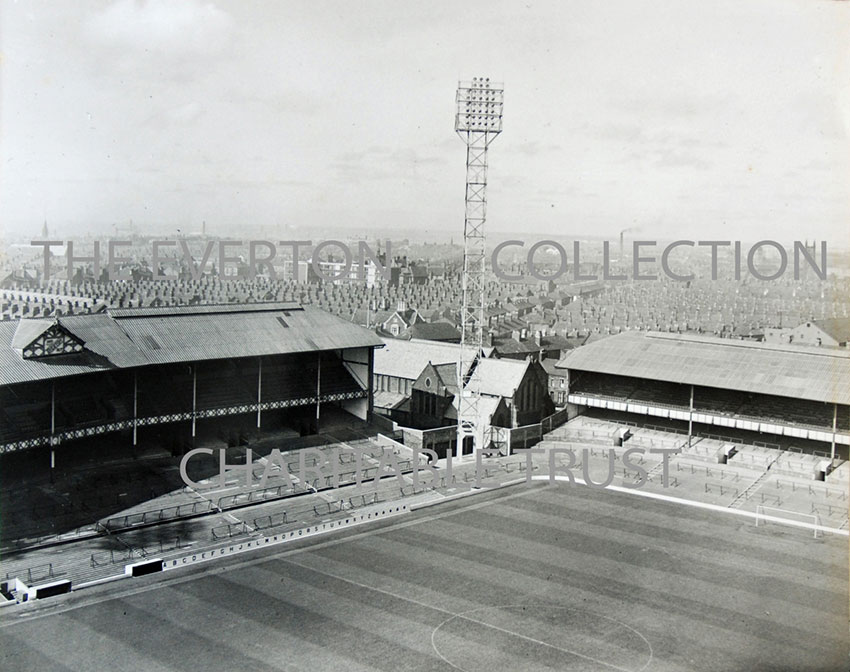
Goodison Park floodlight, circa 1960
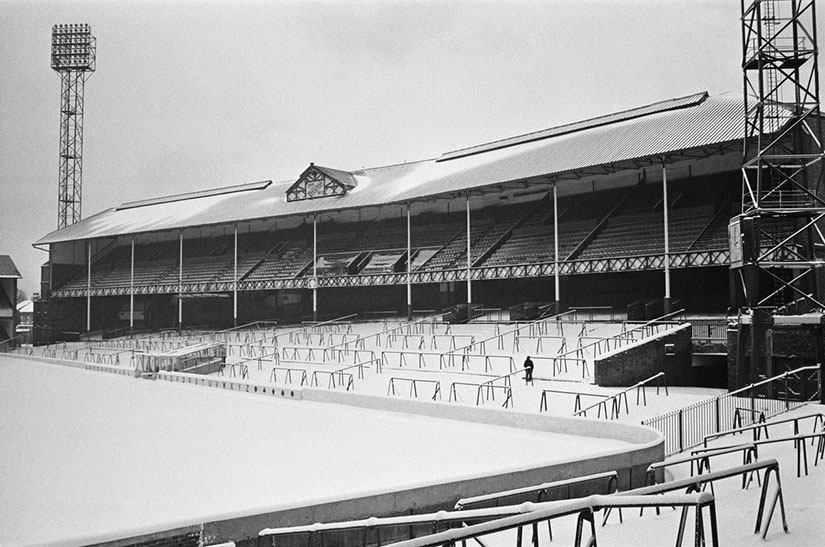
Goodison Park with snow and floodlights, early 1960s
The four steel goliaths stood sentinel over Goodison Park for a surprisingly short period of time. In 1970, lighting was placed along the rooflines of the new Goodison Road stand and the Bullens Road stand (the latter stand had its roof raised in the mid-1960s). The £45,000 investment delivered state-of-the-art lighting, suited to the adoption of colour TV broadcasting.
The new system first saw use on 18th August in the midweek fixture against Burnley – John Morrissey netting in a 1-1 draw. The previous week, the players had a training session commencing at sunset with the new lights turned on. With the 10-kilowatt bulbs (far more powerful than those used on the pylons) sited lower than before, concerns were raised by some players who were – according to the ‘Soccerscope’ column in the Echo – ‘disturbed with the dazzle and glare’. Nonetheless, players soon adapted. The tower in the Bullens Road-Park End corner of the ground outlived the others (photographic evidence showing it extant in late 1974).
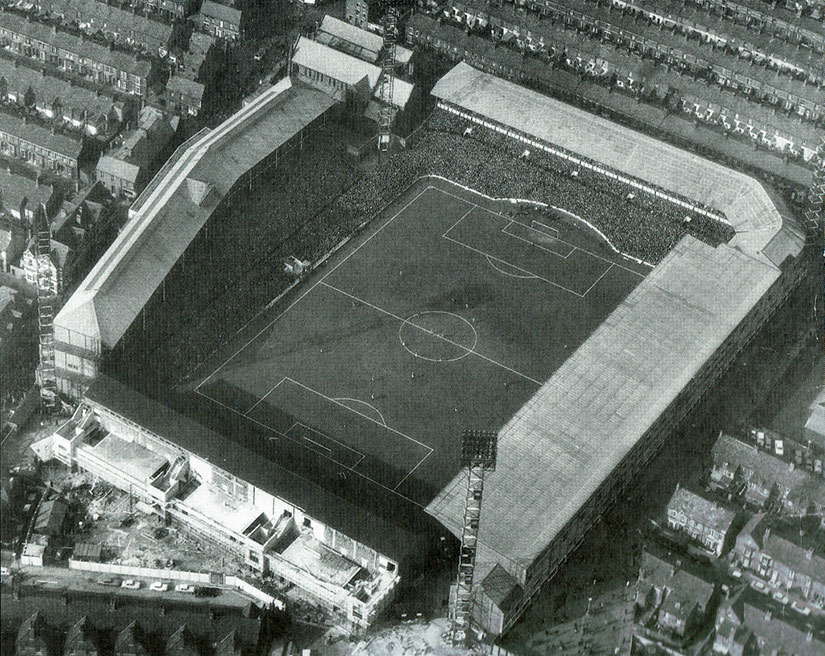
Aerial view of Goodison Park, circa 1965
In December 1989, a £70,000 upgrade to the system by Philips was marked by a friendly match against PSV Eindhoven – a club originally founded in 1913 for employees of the Dutch electronics giant. Five years ago, the lighting system was further bolstered with additional lamps installed in order to satisfy the requirements of broadcasters using HD technology.
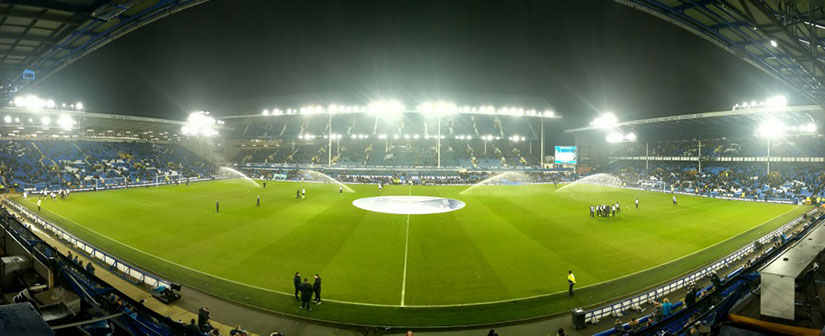
Acknowledgements/Sources
Newspaper reports from bluecorrespondent.co.uk (Billy Smith) and findmypast.co.uk
Everton matchday programme
Richie Gilham
Photo from c. 1960 used with kind permission of The Everton Collection (copyright applies)
Versions of this article previously appeared in the Everton matchday programme and The Black Watch


